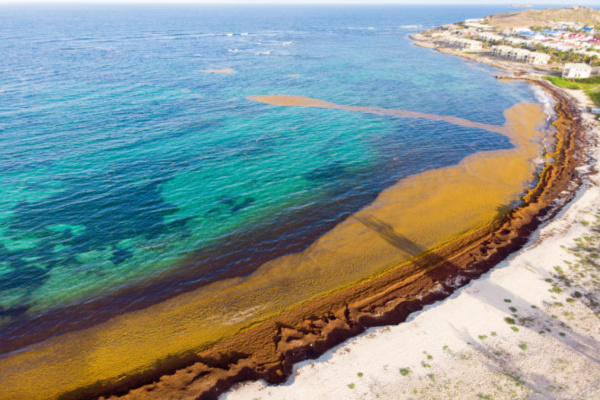A marine heat wave is unfolding on a global scale that is setting records that have stood for decades, and forecasters say it could get worse in the coming months as El Niño takes hold in the Pacific Ocean.
As AccuWeather reports, underwater heat waves occur when water temperatures in parts of the ocean are well above historical averages. Alone, these events are not uncommon, but the nature of multiple, widespread events across the world’s oceans is alarming to scientists.
“April was the warmest ocean average temperature on record, beating out was previously a record in the 2016 El Niño event,” Dr. Robert Rohde told AccuWeather National Reporter Bill Wadell. “So even though we don’t have an El Niño yet, all of this put together is adding up to the warmest ocean period we’ve seen on record.”
Marine heat waves are happening ‘all over the place’
Rohde is a lead scientist at Berkeley Earth near Oakland, California, and has been analyzing the ocean temperature around the world. He added that the warming isn’t just in the Pacific Ocean, where El Niño is starting to develop but “all over the place.”
Data from the National Oceanic and Atmospheric Administration (NOAA) shows that the most pronounced marine heat wave is unfolding off the coast of South America near Peru, but there are also noticeable events in the eastern Atlantic, north-central Pacific, southwestern Pacific and Indian oceans.
And the water will get hotter with the looming El Niño. “All of this is coming together more rapidly and more strongly than I expected, which suggests we could be on pace for quite a strong El Niño event,” Rohde said. “That would have follow-up effects all around the world as it changes precipitation patterns, in some places leading to drought, some places leading to flood, some places will be more prone to heat waves.”
El Niño is strictly related to water temperatures near the equator in the eastern Pacific Ocean. In April, NOAA issued an El Niño watch, saying there is a 62% chance of the phenomenon developing in the next two months.
The warmer waters in the Pacific Ocean associated with El Niño can reshape weather patterns across the globe for months at a time. AccuWeather’s team of long-range meteorologists says the effects may start to unfold this summer.
What marine heat waves mean for the weather
One of the ongoing underwater heat waves contributed to record temperatures in Spain at the end of April.
AccuWeather Senior Meteorologist Paul Pastelok said that the combination of cool waters south of Greenland and warm waters off the coast of Europe and Africa enhanced the weather pattern that led to unprecedented heat in Spain.
On April 27, the temperature topped out at 101.8 degrees Fahrenheit (38.8 C) in Córdoba, Spain, located in the southern tier of the country. This broke the previous all-time April temperature record for Europe, which was 101.5 F (38.6 C) set in Elche, Spain, in 2011.
In the United States, Pastelok said that ocean temperatures have had “a great contribution” to weather patterns dating back to the end of autumn, including the prolific rainfall and snow in California.
More recently, the unusually warm waters have amplified the severe weather risks. “Water temperatures are running way above the historical average in the Gulf of Mexico,” Pastelok said. “We’ve seen that have a major influence on our severe weather outlook and a dangerous one, especially in the Mississippi and Tennessee Valley.”
The warmer water has provided an influx of moisture that has helped to fuel severe thunderstorms over the southeastern U.S., contributing to a record number of tornadoes during the first three months of 2023. One deadly tornado outbreak that unfolded on March 31 into April 1 spawned 80 twisters across 10 states.
The marine heat wave in the Gulf of Mexico could continue to influence the weather into the upcoming hurricane season. “The overall weather pattern combined with the warm waters could spin up a tropical system in late May or shortly after the official start of the Atlantic hurricane season on June 1,” Pastelok said. He added that the tropical activity could really ramp up later in the summer as tropical waves coming across Africa track over the areas of the Atlantic experiencing a marine heat wave.
Why are underwater heat waves happening?
Marine heat waves alone are common occurrences, but the latest data suggests that more could be happening on a global scale. Pastelok said that what has been observed as of late could be a combination of natural variability in weather cycles and a warming atmosphere. “The cycles that we look at are changing,” he said. “They’re not acting like they did in the 1950s or 1930s.”
Rohde echoed Pastelok’s thoughts. “Natural variability has always been there, and it always will be there,” Rohde said. “With the warming temperatures in the ocean, we’re going to have variations in weather that we’re not used to or we’re gonna be pushing the envelope beyond what has been normal in the past.”
—
Photo Credit: Multiverse / Shutterstock.com
